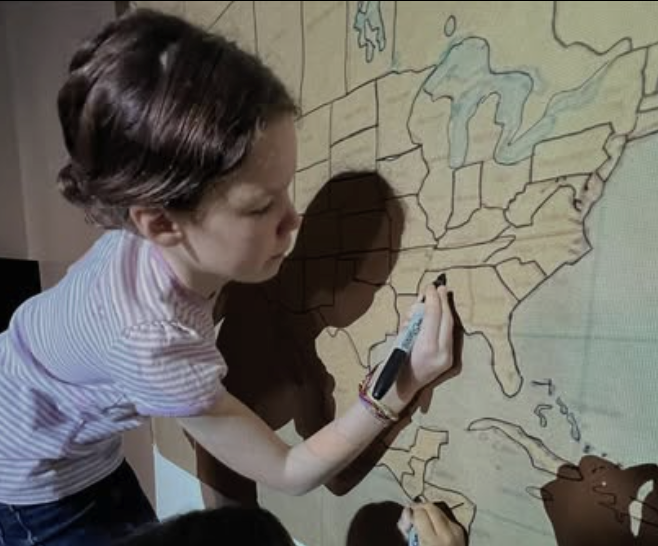The Science of Seasons
At Advent, curiosity is always in season! In the Lower and Upper School Ateliers, students are diving into the science of change—whether it’s the shift from summer to fall or the journey of food from farm to table.
Through hands-on observation, research, and creative projects, our young scientists are exploring migration, adaptation, ecosystems, and the complex connections between people and the natural world. Along the way, they’re discovering that science isn’t just about memorizing facts—it’s about asking questions, noticing patterns, and imagining solutions that help both humans and wildlife thrive.
Exploring Seasonal Change in the Lower School Atelier
Second Graders have been captivated by the shift from summer to fall, sparking a scientific exploration of migration and adaptation. Through observation, research, and discussion, they’ve studied how birds and amphibians respond to seasonal change—discovering patterns in nature and learning new vocabulary in Spanish to describe animals, habitats, and weather. Through an artistic lens, students brought their studies to life by drawing amphibians and building playful cardboard habitats inspired by their findings.
When students wondered what amphibians do in the fall, Ms. Vicky read Safe Crossing, a story about communities helping frogs cross busy roads. Inspired, students designed their own models using cardboard, paint, and natural materials to imagine a safe passageway for migrating creatures. This hands-on project blends science, art, and empathy—inviting students to think critically about how humans can support wildlife.
Through their questions and creativity, Second Graders are learning that science involves curiosity, observation, and caring for the world around us. Their work reminds us that understanding nature helps us act thoughtfully within it.
Food, Farming, and Migration in the Upper School Atelier
Fifth and Sixth Graders are exploring the science and social systems behind the food we eat—connecting biology, geography, and human stories. Their investigation began with a simple question: Where does our food come from? Students reflected on a meaningful family meal, then traced the ingredients that make it possible, researching where each food grows and the conditions it needs to thrive.
A field study at Whole Foods deepened their inquiry. Students examined labels, traced supply chains, and discovered that while some foods are sourced locally, others travel hundreds or even thousands of miles. These observations led to thoughtful discussions about ecosystems, agriculture, and the essential role of farm workers and migrating communities in sustaining our food systems. Students are now at work creating a large interactive map charting the journey of each ingredient—from field to table.
By visualizing the connections between people, plants, and places, Fifth and Sixth Graders are learning to see food not just as nourishment, but as part of an interconnected global network. Through this work, they are developing scientific curiosity, empathy, and awareness of how human movement, climate, and the natural world intertwine.



